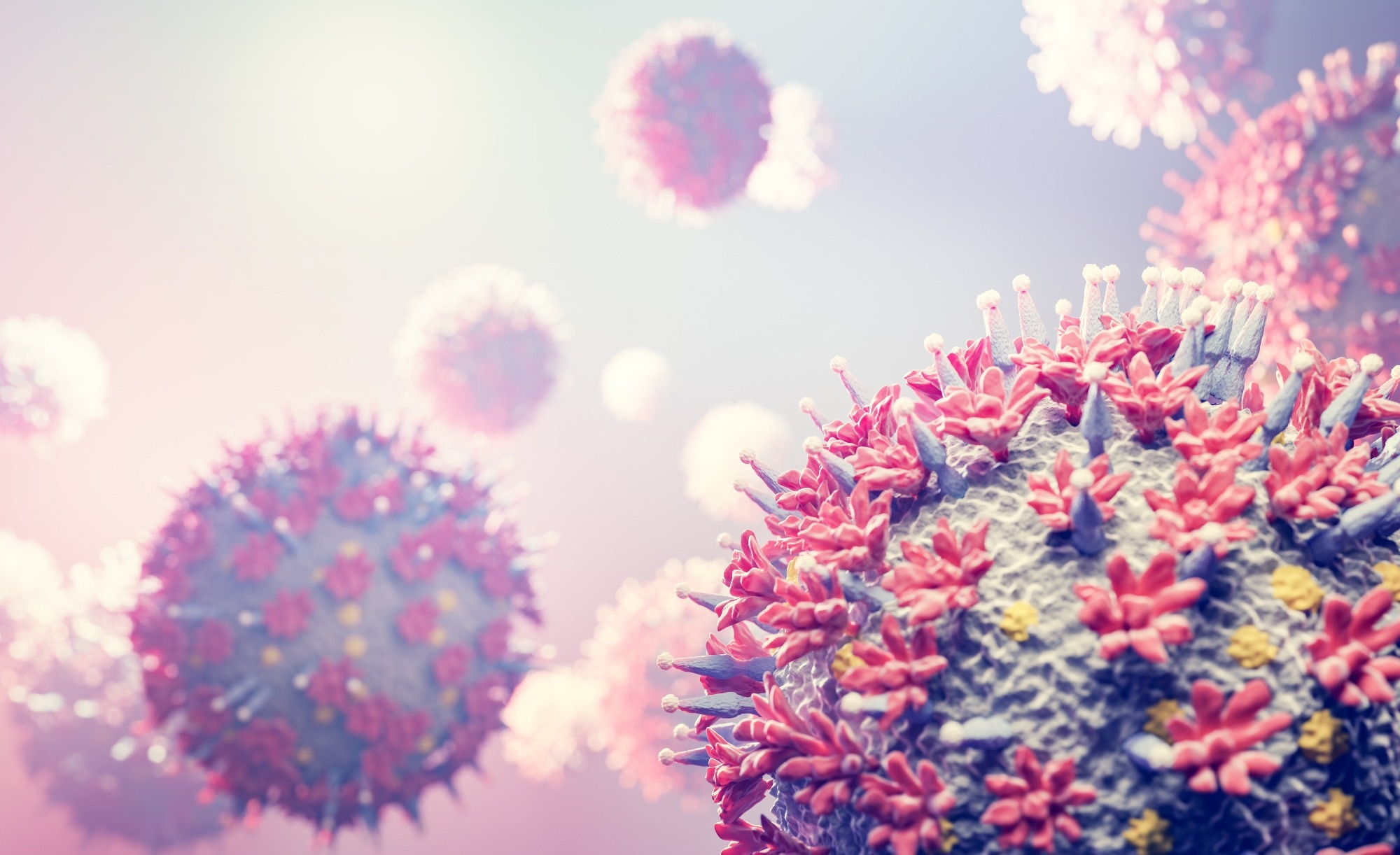The study explores how this infection could be blocked by anti-low density lipoprotein receptor (LDLR), anti-Caveolin1, anti-Dynamin antibodies, cholesterol-depletion agents, and LDLR small interfering ribonucleic acid (siRNA) molecules.
 Study: Low-Density Lipoprotein Receptor (LDLR) Is Involved in Internalization of Lentiviral Particles Pseudotyped with SARS-CoV-2 Spike Protein in Ocular Cells. Image Credit: PHOTOCREOMichal Bednarek/Shutterstock.com
Study: Low-Density Lipoprotein Receptor (LDLR) Is Involved in Internalization of Lentiviral Particles Pseudotyped with SARS-CoV-2 Spike Protein in Ocular Cells. Image Credit: PHOTOCREOMichal Bednarek/Shutterstock.com
Background
SARS-CoV-2 entry into the host involves the angiotensin-converting enzyme 2 (ACE2) receptor. However, low ACE2 expression can still infect tissues and cells, such as adipose tissues and the ocular sclera. SARS-CoV-2 may also infect T-lymphocytes and epithelial cells independently.
Additional receptors, such as AXL, Neuropilin-1, Basigin, Angiotensin II receptor type 1 (AT1), and vasopressin V1b receptor (AVPR1B), promote entry in different cells. Endocytic pathways, such as clathrin-dependent and caveolae-dependent pathways, have been identified in recent studies.
Other candidate receptors, such as epidermal growth factor receptor (EGFR), AXL, and LDLR, have also been predicted.
About the study
In the present study, researchers found that Caveolae and LDLR receptors in caveolae are components of the SARS-CoV-2 receptor-dependent endocytosis mechanism, which it employs to infect certain organs, including ocular cells.
The researchers investigated where SARS-CoV-2 enters the RPE cell culture model, ARPE-19, and if cholesterol-rich lipid rafts are involved in SARS-CoV-2 infection of ARPE-19 human retinal pigment epithelial cells.
Antibodies against vimentin and additional putative potential receptors for SARS-CoV-2-neurolipin-1, EGFR, AXL, and the cluster of differentiation 147 (CD147) were investigated.
We employed cyclodextrins and oxysterols to disrupt cholesterol homeostasis in the retinal pigment epithelial cells. ARPE-19 cells were incubated with 0.0 to 10.0 M 25-HC after being infected with SARS-CoV-2 native spike pseudotyped lentiviral particles.
Lovastatin was used to assess cholesterol presence. A six-hour preincubation session with 0.0 to 10.0 M lovastatin alone was followed by a 48-hour co-incubation period with lovastatin and pseudovirions.
The researchers next tested whether the agonistic activity of 25-HC on LXR receptors is responsible for preventing viral infection by preincubating cells with 0.0 to 10 M of the synthetic LXR agonist GW3965.
The researchers utilized chlorpromazine (CPZ), a cationic amphipathic chemical used at micromolar concentrations (50 to 100 M), to block the CME of several plasma membrane proteins. The researchers next used an anti-caveolin-1 antibody to look into caveolae-dependent endocytosis.
Anti-LDLR antibodies were used to investigate the low-density lipoprotein receptor hypothesis. The researchers assessed positive selection for ACE2 and LDLR receptors to examine adaptive evolution in SARS-CoV-2 viral receptors in response to viral infection.
Pseudovirus infection and cell viability assays, immunoblot analysis, quantitative polymerase chain reaction (qPCR), and multiple alignment analyses were performed on siRNA-treated and pseudovirions-infected human retinal pigment epithelial cells.
Results
The findings indicated that SARS-CoV-2 internalization in ARPE-19 cells occurred via caveolae-mediated endocytosis via LDLR.
Antibody therapy to suppress ACE2 failed to prevent SARS-CoV-2 S protein pseudovirion infection, nor did it prevent blockage of extracellular cholesterol-dense lipid raft protein molecules such as vimentin.
The team also demonstrated that various oxysterol 25-hydroxycholesterol (25-HC) and cyclodextrins reduced pseudovirion infection in ARPE-19 cells, indicating a role for cholesterol homeostasis in infection.
However, since lovastatin incubation had no discernible influence on infection, the action of 25-HC was most likely not via cholesterol production. Flotillin- and clathrin-based rafts weren't implicated in pseudovirion infection.
Antibodies against dynamin I and II and dynasore, a non-competitive dynamin guanosine triphosphatase (GTPase) inhibitor, prevented SARS-CoV-2 S glycoprotein pseudovirion entrance.
Antibodies against caveolin-1 inhibited spike glycoprotein-pseudotyped lentiviral SARS-CoV-2 infection in the human retinal pigment epithelial cells considerably. However, nystatin, a well-known caveolae-based endocytosis inhibitor, did not affect infection at all dosages.
There was also no significant effect of GW3965 on spike glycoprotein-pseudotyped lentiviral SARS-CoV-2 infection of the retinal pigment epithelial cells up to a 5.0 mM concentration.
An inhibitory effect of chlorpromazine and flunarizine was observed on pseudovirions infection at 24.0 hours but not 48.0 hours. The findings indicated that SARS-CoV-2 spike glycoprotein pseudovirion infection is dynamin-based and largely regulated by LDLR of the retinal cells, as verified by genetic silencing using LDLR-targeted small-interfering RNA molecules.
A statistically significant reduction was observed in SARS-CoV-2 spike glycoprotein pseudotyped lentiviral SARS-CoV-2 infection post-treatment with low-density lipoprotein receptor small-interfering RNA molecules compared to scrambled small-interfering RNA molecules or blank transfection.
Low-density lipoprotein receptor expression in the cells showed a linear correlation with spike glycoprotein-pseudotyped lentiviral particle uptake.
Conclusion
Based on the study findings, caveolae-mediated transcytosis of viruses linked with the LDLR receptor is likely to represent an alternate mechanism for SARS-CoV-2 internalization in cells lacking ACE2, such as ARPE-19.
The scientists hypothesized that LDLR receptor involvement in metabolic dysfunction might increase the risk of developing significant COVID illness in obese and diabetic individuals, warranting further research.